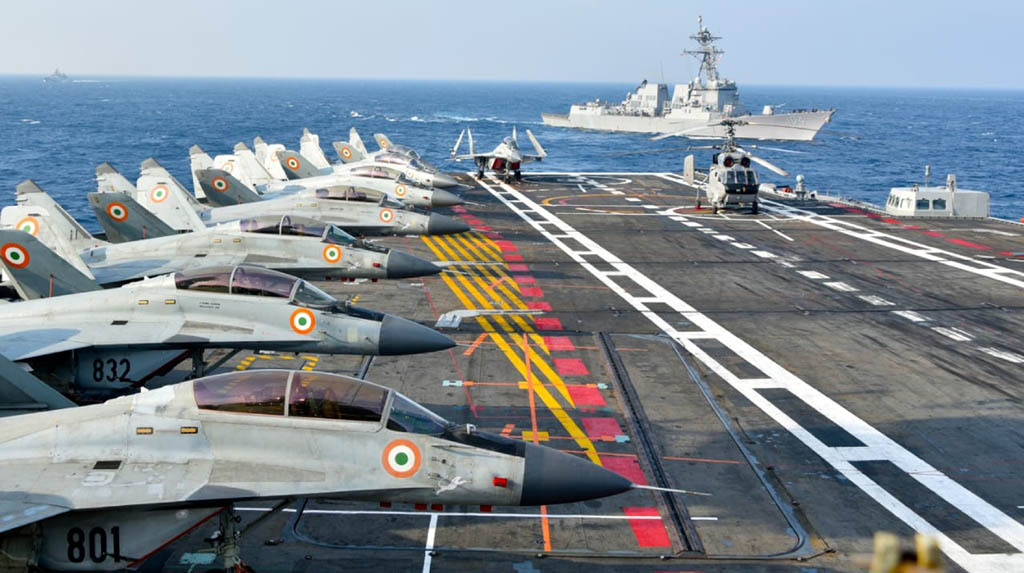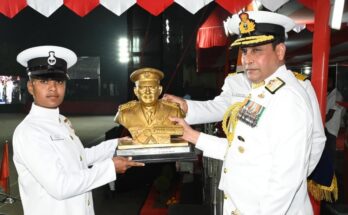New Delhi: The Malabar exercise between navies of the Quad or Quadrilateral coalition — an informal security forum comprising India, the US, Japan and Australia — in the Indian Ocean Region concluded on Friday.
The naval drill of the Quad members holds significance as China is making attempts to get a wider footprint in the Indo-Pacific region.
The Indo-Pacific region spans’s from the west coast of India to the US’ west coast.
The exercise, hosted by the Indian Navy, took place in two phases in November.
The first phase of the exercise involving participation by the Indian Navy, the United States Navy, the Japan Maritime Self-Defence Force and the Royal Australian Navy, was conducted off Visakhapatnam in Bay of Bengal from November 3 to November 6. The second phase was conducted in the Arabian Sea from November 17, to November 20.
The first phase of Malabar witnessed participation of Indian Navy units with United States Ship (USS) John S McCain, Her Majesty’s Australian Ship (HMAS) Ballarat with integral MH-60 helicopter, and Japan Maritime Self Defence Ship Onami, with integral SH-60 helicopter.
“Indian Navy’s participation in this phase was led by Rear Admiral Sanjay Vatsayan, Flag Officer Commanding Eastern Fleet, and included destroyer Ranvijay, indigenous frigate Shivalik, Offshore Patrol Vessel Sukanya, Fleet Support Ship Shakti, submarine Sindhuraj, P8I and Dornier maritime reconnaissance aircraft and Advanced Jet Trainer Hawk,” said Indian Navy’s Commander Vivek Madhwal.
During Phase two, the four navies participated in joint operations centered on the Vikramaditya Carrier Battle Group of the Indian Navy and the Nimitz Carrier Strike Group of the US Navy.
The two aircraft carriers, along with other ships, submarine and aircraft of the participating navies, engaged in high intensity naval operations including cross-deck flying operations and advanced air defence exercises by MiG-29K fighters of Vikramaditya and F/A-18 fighters and E2C Hawkeye from Nimitz.
US Navy’s Strike Carrier Nimitz was accompanied by cruiser Princeton and destroyer Sterett in addition to P8A maritime reconnaissance aircraft.
The Royal Australian Navy and the Japan Maritime Self-Defence were represented by frigate Ballarat and destroyer Murasame respectively, along with their integral helicopters.
The Indian Navy’s participation in phase two was led by Rear Admiral Krishna Swaminathan, Flag Officer Commanding Western Fleet, and included aircraft carrier Vikramaditya, indigenous destroyers Kolkata and Chennai, stealth frigate Talwar, Fleet Support Ship Deepak and the integral helicopters of these warships, indigenously built submarine Khanderi and P8I and IL-38 maritime reconnaissance aircraft.
In addition to “Dual Carrier” operations, advanced surface and anti-submarine warfare exercises, seamanship evolutions and weapons firing were also undertaken during both phases of the exercise, demonstrating the synergy, coordination and inter-operability between the four friendly navies.
The Malabar series of exercises, which began as an annual bilateral naval exercise between India and the US in 1992, have seen increasing scope and complexity over the years.
“The 24th edition of the drill, conducted in a ‘non-contact at sea only’ format in the backdrop of Covid-19 pandemic, was reflective of the commitment of the participating countries to support a free, open, inclusive Indo-Pacific as well as a rules-based international order,” Madhwal added.




